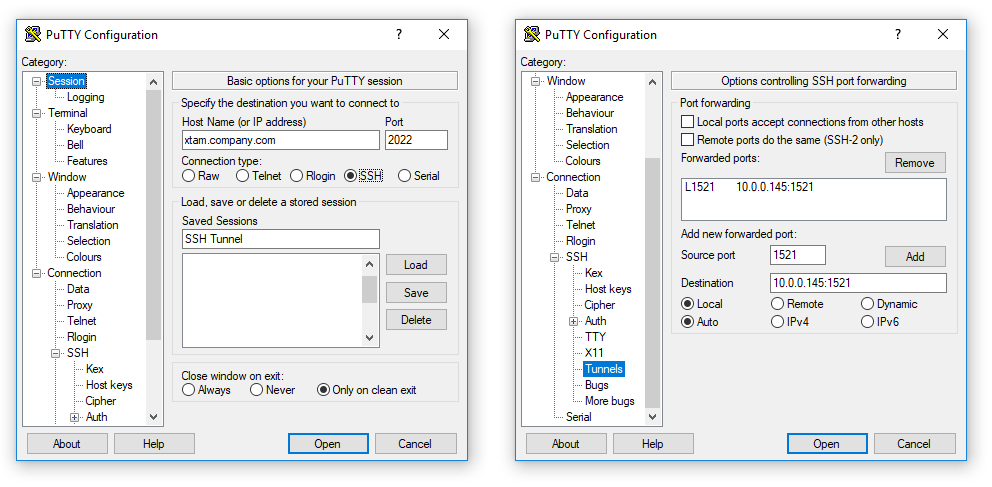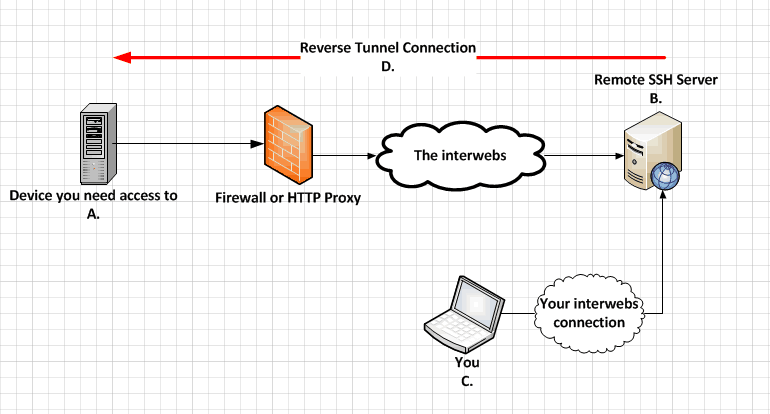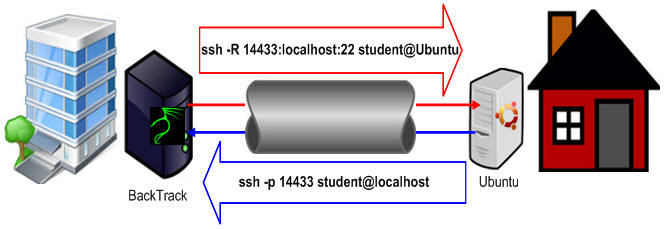


Don’t enter any information in the “Host Name” field. Enter a name under “Saved Sessions” text field. Don’t change any other settings.ħ) Click on the “Session” option from the navigation panel. On the right-side proxy options, enter only the following information. Select the options “Proxy” from the navigation panel. Now we are ready to connect to any home machine.Ħ) Open another putty session. Now you have a proxy tunnel connection from remote machine to one of the home machine. That brings to the end of putty configuration. This user need not be root user, but it needs to be an user with network access on the remote machine.
#Putty ssh tunnel password#
Add a name for this connection in the saved sessions textbox and click save.ĥ) Click open, to open connection to home machine, and enter login and password information for the remote machine. Now we can save the whole connection settings. You will be seeing the settings entered in step(1). Source Port: 3000 (this is the port at which our proxy service listens to, this port can be changed to any but preferably a number larger than 1024)įinally, select “Dynamic” from the radio button options.ģ) Important: Click “Add” to add the tunnel settings to the connection.Ĥ) On left-hand navigation panel, move the scrollbar to the top and click session. Note: Though your putty screen might look a little different than the one seen here due to version differences, the basic steps would be still the sameĢ) In putty, on the left-hand navigation panel, open SSH option and select “Tunnels”. Port 22 will be selected which can be left alone unless you run the SSH service on a different port. Note: If on the remote network’s subnet is same as your home network’s subnet then you might run into IP conflicts.ġ) On the remote system, open putty enter the IP address or dynamic DNS (DDNS) name in the host name field.


It was a tedious process of enabling port forwarding and then disabling it after use. Previously, when I needed SSH access to these machines I used to setup port forwarding on my router to each of these machines. I have multiple Linux machines at my home. Create your own Virtual Private Network for SSH with Putty


 0 kommentar(er)
0 kommentar(er)
